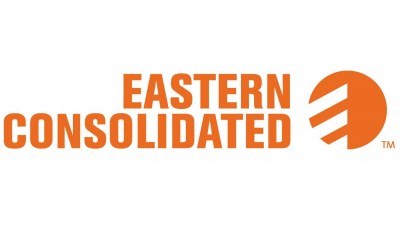The Rise, Fall And Rise Of Morningside Heights

These days, Alexander Hamilton’s folk hero status is on our minds due to a certain Broadway play. But the man had a big real estate impact, too, and it's still being felt in Morningside Heights, well after his heyday.
In addition to Hamilton Heights, not far from Morningside Heights, where he had a country house, Hamilton’s stomping grounds were in Lower Manhattan.
That was the home of King’s College, the school he dropped out of to join the American Revolution. The school was closed during the war, and Hamilton pushed to get it back up and running in America’s infancy.
He pushed for something else, too. A new name: Columbia.
The name was meant to signal a specifically American identity in its reference to Columbus, says New York Historical Tours director Kevin Draper, who showed us around the neighborhood with Eastern Consolidated principal Adelaide Polsinelli on a recent morning.
It would be more than a century after the re-establishment and renaming of the school before it would move to its campus in Morningside Heights.
At the time, it was located around where Rockefeller Center is now, and Kevin tells us the university’s leadership was concerned that its setting in an increasingly dense urban area would hurt the Ivy League school’s prestige.
A proper campus was needed. But where was there land for something like that?
University president Seth Low led the establishment of the new campus in the 1880s and ‘90s, which brought the school to 33 acres in the heart of an area Kevin says developers at the time were eyeing as a new bastion of upper class life in New York.
Another president of the university, Frederick Barnard, helped make the school what it is today. If the name sounds familiar, that’s because the women’s college affiliated with Columbia—the first of its kind, according to Kevin—bears his name.
Barnard argued for much of his life that women ought to be allowed to attend universities. But it wasn’t until the year of his death, in 1889, that the college was founded.
Ironically, in part because Barnard College was right across the street, Columbia was the last Ivy League school to allow women to enroll in its main undergraduate college, barring them from admission until 1983.

Like much of the city, Morningside Heights suffered from disinvestment from the 1930s to the mid-20th Century, but the grand apartment houses, unlike the cramped tenement buildings found in many other parts of Manhattan, tell the tale of historic prosperity.
Broadway, the main drag of an area known as Manhattan’s “intellectual Acropolis,” is lined with book tables, bookstores and, for much of the year anyway, it’s abuzz with students.
Adelaide points out that its retail scene has been in flux over the past few years, and rents in the area reflect the changes.
There are more restaurants and cafés than in decades past, like in the early '90s when Adelaide worked on foreclosures for lenders who took back properties in the neighborhood where the retail had failed and sat vacant.
But nowadays, she says landlords who are newer to the area have a higher cost basis than the ones who’ve owned there for generations.
It’s one thing that leads them to take bigger risks on bringing in tenants—like those nice restaurants—that can pay higher rents, helping to compensate for the fact that street life in the area takes a hit during the months of the year when the students go home.
In other buildings—especially those owned by the university, which is unburdened by property taxes—there’s less pressure to sign up tenants that can shell out big bucks for rent.
Per numbers Adelaide had handy on our tour, retail asks right now along Broadway range pretty widely, from as low as $75/SF to as high as $345/SF.

There’s no question that Columbia’s campus anchors the neighborhood, but it’s hard to ignore its colossal neighbor, the Cathedral Church of St. John the Divine.
It’s the fourth-largest cathedral in the world, Kevin tells us, and at about two football fields long and around 100 feet high, no other church in NYC comes close to its sheer size.
Let’s put it in perspective: Kevin says you could fit St. Patrick’s Cathedral inside the sanctuary of St. John the Divine if you took out the steeple.
Ground was first broken on the hulking church in 1892, and construction has never officially stopped.
It’s still technically unfinished to this day, mostly because the flow of financing to finish it was interrupted by events like the Great Depression and the flight of capital out of the city in the post-war years.

A big stream of money opened up in 2013, when the Brodsky Organization picked up a 99-year ground lease from the church to build a 428-unit rental development on church grounds.
It’s open now, with studios asking $2,631/month and one-bedrooms asking $3,240/month.
Nonprofits selling or ground leasing in the area has been a bigger phenomenon since a rezoning of the entire Upper West Side in 2007 upped the allowable floor area ratio in that part of the city. Many nonprofits suddenly had air rights they could sell.

Mt. Sinai’s St. Luke’s Hospital was one of the latest to cash in, with Delshah Capital picking up five buildings this spring for $111.5M.
A team from Eastern Consolidated arranged a $60M loan from Bank of The Ozarks for the acquisition. The plan is to convert the properties for residential use.
Adelaide says nonprofits in the neighborhood are likely to keep making deals like these as property that was once modest in value fetches prices that are hard to turn down. In today’s New York, it comes as no big shock.
“There is no bad neighborhood in Manhattan anymore,” Adelaide says.

